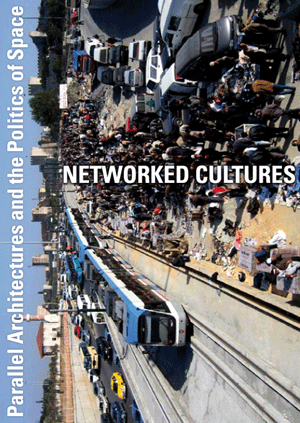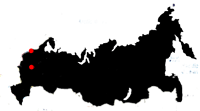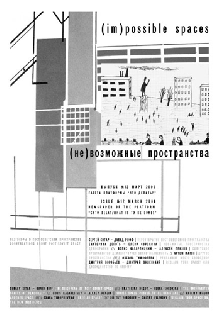_login
registrieren
_5 Factories - Worker Control in Venezuela Dario Azzellini & Oliver Ressler
_ALMOSTREAL ECF
_AnArchitektur Jesko Fezer
_Arizona Road Azra Aksamija
_Balkan Konsulat rotor
_Bata-ville: We are not afraid of the future Nina Pope + Karen Guthrie / www.somewhere.org.uk
_Black Benz Race krcf in collaboration with Felix Stalder, Arben Gecaj, Faton Topalli and Osman Osmani
_Black Sea Files Ursula Biemann
_Camp La Jolla Military ParkOwen Mundy
_CHANGE REALITY: Renaming the Streets of Zagreb REINIGUNGSGESELLSCHAFT
_Conceptual Paradise. There is a place for sophistication Stefan Roemer
_de-regulation Irit Rogoff, Kutlug Ataman, Stefan Roemer

____________Bloomberg SPACE, London
____________Kumu Art Museum Tallinn
____________Open Space, Open Systems - Vienna
____________CAA 2011 Conference, New York
____________Forum Stadtpark, Graz
____________Symposium, Istanbul
____________lungomare, Bozen/Bolzano
____________Metropolis Biennale 2007-17, Copenhagen
____________new publication available now
____________Mestna Galerija, Ljubljana
____________Livestream of Networked Cultures documentary
____________
|
_Database
project:
On the Question of Self-Organization in the Arts
location: Moscow - St.Petersburg

date: 2003-01-01
info:
CAT Group and Dmitry Vilensky
Diagnosis:
In contemporary Russia, the existent system of power seems totally incapable of formulating or realizing any consistent cultural policy, just it seems unable to formulate any coherent policy on the whole. Nevertheless, it constantly imposes the chimera of the necessity for unity with the state. In order to do so, it continuously promotes and demonizes the image of a certain outer or inner enemy, be it terrorism, orange revolution, or the aggression of U.S. foreign policy, geared toward conquering and dividing our country etc. All of this takes place against the realization - growing more and more massive - that the state is a reality of its own right, alienated from the people, more and more reminiscent of a criminal organization who bosses are interested in nothing but holding on to their present positions, since these position guarantee huge financial profits for catering to someone else's business interests. To this state, the interests of society's development seem like some vexatious misunderstanding, only to be taken into consideration when buying electoral votes in yet another carded election. If one directs one's attention to the fact that a huge, constantly growing percentage of the population either votes against the representatives of power or doesn't vote at all, it becomes completely incomprehensible in whose name this power continues to function.
The situation in culture:
The mediocrity and open corruption of cultural officials, their obvious servility toward both power/capital and the new consumer-audience (based on the principle of 'what would you care for?') has had an even more disasterous effect on the collapse of cultural production that the catastrophic lack of funding, which is stolen systematically. The cult of kickbacks and the economy of 'absorption and embezzlement' have become the norm: this is something that even Russia's Minister of Culture has acknowledged in public. This atmosphere has given rise to a new official culture, a design-hybrid for public spaces and living-rooms. In fact, the opposition between the 'public' and the 'private' has almost been lifted completely: everything has been privatized to an equal measure, subordinate to its new owner's interests and under guard by a huge army of cops. A privatized amusement park: this is the new name of contemporary culture, once it has been become a sphere in which weak-mindedness is not only tolerated but actually encouraged, growing fat on the oil-dollar of a self-satisfied, aggressive class of new consumers.
As not only recent experiences in Russia but also in other countries of peripheral capitalism have shown (the Moscow Biennale or the opening of the Museum of Contemporary Art in Bucharest), the sporadic intervention of the global art scene into local situations - called into being with the goal of proving (interesting question, to whom?) that everything is following 'normal democratic procedures' - only serve to magnify the disorientation. The ensuing alliance between the local bureaucracy and international star-functionaries on tour is monstrous, compactly demonstrating the entire cynicism of the events as they transpire. Everyone is called upon to mobilize their forces as quickly as possible to build yet another global Potemkin's village under the slogan 'A minimum of analysis, a maximum of events', and asked to forget that some completely other life lies elsewhere, beyond the picket fence that is being nailed together so hastily.
Times of Reaction and Hope:
In this situation, the majority of artists and cultural producers find themselves cut off from the most elementary mechanisms of decision-making, destined to an existence in poverty. Their disorientation is a direct consequence of process that are taking place in real politics. At the same time, the absence of any kind of political consciousness, the high level of conformism and susceptibility to the seduction offered by 'the market's endless possibilities' have played their reactionary role. But by today, more and more people are coming to realize that we are living in a reactionary time: there is no hope that things will change for the better on their own, not for you personally, and not for society at large. Of course, there will be changes: the world that surrounds us will take on more and more monstrous forms if we aren't able to organize our activities. In other words, the question of self-organization becomes the central question of political life and cultural production, all the more because we still have many open possibilities at our disposal.
The system of the commodity production encompasses all of life; anticipating each and every one of our movements, it considers all of our potential needs and desires from cradle to grave. We go to school in order to pay for our education, we fall in love because our local mobile phone company has opened up a new tariff for two. Our bodies move according to the wants and needs of our boss. Our history has already been sold off like a cut-price article. We dream of Benneton and MTS. We are monsters of commodity culture. On Mayday, we will show ourselves as what we are; we will demand the impossible.
From the 'Monstration' Manifesto
constant novelty - the race of armed societies based on the overproduction of goods - defines the social demand that contemporary art is meant to satisfy. A highly developed society is in need of intellectual values that confirm its reality, leading to the constant production of new package-deals, conservative reinforcements of its lifestyle. However, this reality doesn't satisfy everyone. The avant-garde has never defined itself through the novelty of its achievements alone. We plan to create our own reality, a reality that is impossible in the system of commodity exchange.
Maxim Neroda, 'Cultural Violence'
Questions:
DV: Is it possible to reclaim public spaces and the spaces of the information media? Or is the tactic with the most potential not the infiltration of existing structures, but the invention of new public spaces - fanzines, exhibition-venues, actions, and interventions into urban space and cultural institutions? And should we rest satisfied, once we have asserted the rights of limited sub-cultural zones and the seeming independence of cultural production, or does it make sense to take the offensive by constantly discrediting the projects of power, publicly demonstrating their bankruptcy and idiocy?
CAT: How is it possible to create a space for communication beyond the established rules? By capturing spaces, or to be more precise, unexpected ruptures and breaks that arise within a system of relationships whose traditions, norms and sanctions are already firmly entrenched.
Today's ban on collective action in any space that the state sees as public gives rise to a new form of subcultural logic: it is only possible to create alternative values in the framework of a certain sub-culture that is stamped off as marginal a priori, relegated to the format of a membership club. The freedom of thought and action is only granted in word, and any statement that doesn't correspond to the course of power is declared to be untrue, fated to realization in no place other than the underground. In the framework of such prohibition, the necessity for a collective experience of reality is realized through a large variety of recreational activities, such as flash-mobs, graffitti, club-culture etc. - which are forms of escapsism, refusing any radical conceptualization of reality and representing a fictional autonomy of culture.
How can one get beyond the boundaries of self-sufficient autonomy?
By forming artistic groups capable of collaborating in producing situations in various public spaces, including those under control by power. For us, it was important to create situations that reveal the absurdity of the present order of things. Art is capable of reaching society at large, demonstrating the hidden principles through which power is implemented, creating and preparing a smart mob, i.e. an intelligent crowd.
DV: Which possibilities do we have for addressing a public that differs from the traditional audience radically in terms of its social origin or class composition?How can one mobilize this public to understand itself as a new political subject, empowering it as a co-author or an interlocutor in discussions and action undertaken in common?
CAT: Our work allots a decisive role to a social group new to Novosibirsk, namely young creative professionals. Today, a new proletariat is in the process of forming, even if this proletariat now owns its means of production (computers, video-cameras etc.) and sells the results of its labor and not its labor-force. Our work designates this constantly growing group, which includes designers, managers, radio-hosts, and journalists - people engaged in intellectual labor - as its primary political subject. For now, these people are not yet capable of gauging their own political potential or recognizing their common interests. But to us, it seems - and this is something the experience gathered in our actions confirms - that it is this group that is ready to take an active part in developing a new political language to express its interests. These people are capable of rejecting the self-sufficient systems of subcultural values and turning to forms of communication that bear a principal meaning to them.
Mobilization become possible through organization. Take, for an example, actions in public space, in which each participant becomes an active co-creator. First and foremost, these happenings actualize the sense of collective actions, provoking power into action, bringing its hidden repressive essence to the forefront.
DV: Is the self-organization of artists and cultural producers capable of becoming a model for a society that is able to formulate and realize its goals independently from power? Can it take over the functions of an alternate power, applying pressure to real power and remaining open to interaction with society at the same time?
Self-organization arises due to alienation from the results of one's labor, which is constantly appropriated by mediators, bosses, and institutions. It is also the result of the complete impossibility of affecting political life. Our primary intention has been to explore the possibilities of communication and forming our own space outside of the framework of cultural institutions, because they embody the anti-humanist, corporate model for organizing society. Today, association beyond their dehumanizing boundaries is the only possible means of political resistance to the powers that be. However, art is not directly concerned with constructing society's relations in practical terms; instead, it formulates the possibilities for creating a society that is radically different from what we face today. It is only possible to apply pressure to establish self-expanding communicative spaces, which are different from the closed, hierarchical space of power in principle. The goal of the communication that we have initiated leads to discussion in open urban spaces: a direct action as an answer to power's direct pretense to the truth. It is only in this way that we can attempt to influence the balance between power and counter-power: communication through networks of groups and individuals which assume an absence of hierarchy can be understood as an experiment and an event that falls beyond the scope of the system of contemporary art, leading to its destruction in the ideal.
DV: Which role do DIY strategies play in contemporary art? What is their specificity?
CAT: Actually, the methods behind creating flash-mobs can be interpreted as a new set of DIY practices. We have worked with these practices extensively. In contrast to the traditional flash-mob, in which all roles, behaviors and gestures are defined by its organizers, our model of organizing actions was based upon the idea of allowing the participants to take a maximum of initiative. Our invitations only defined a number of basic conditions for their execution and little more, for an example: 'Everyone who wants to should make a slogan that is completely meaningless', as in 'Monstration', for an example. The entire project of politicizing the flash-mob was invented as an artistic strategy that is only possible if each participant does everything him- or herself. In this sense, the main message that we meant to convey through our actions was that each person can be perceived as an artist, but that the only kind of creativity accessible to everyone is to create their own history, instead of living it out in passivity.
The CAT group was founded in Novosibirsk in 2003 by the sociologist Ekaterina Drobysheva, the artist Maxim Neroda, and the political activist Artem Loskutov. The group became known through the organization of an entire series of actions in urban space.These include 'Monstration' (2004-2005), an intervention in a Mayday demonstration with absurdist slogans and posters, 'Study, Study, and Study Again' (2004), a street-party in defense of free education, which took around a monument to Lenin, or 'Freedom, Equality, Piracy' (2004), the blocking of advertising campaigns by circulating and destroying pirate productions. For more information, see www.monstration.narod.ru.
http://www.chtodelat.org
|
+ Ana Dzokic and Marc Neelen
+ Ayreen Anastas and Rene Gabri
+ atelier d'architecture autogérée (aaa)
+ Asya Filippova
+ Sophie Hope and Sarah Carrington
+ Branca Curcic
+ Christoph Schaefer
+ Campement Urbain
+ Claudia Zanfi
+ Despoina Sevasti and Poka-Yio
+ Erden Kosova
+ Helmut Batista
Radio as Spatial Practiceby: Paulo Tavares
Survival Kits: Artistic Responses to Globalizationby: Marga van Mechelen
What Ever Happened to Cultural Democracy?by: Sophie Hope
I don't know how to explain ...by: Anca Gyemant
Trading Placesby: Peter Moertenboeck & Helge Mooshammer
Milosevic as Architectby: Srdjan Jovanovic Weiss
When the Unavoidable Knocks at the Door ...by: Gulsen Bal
Tracing Translocality: The BlackBenz Raceby: Felix Stalder
travelling lexicon towards a global positioning systemby: Celine Condorelli
|


